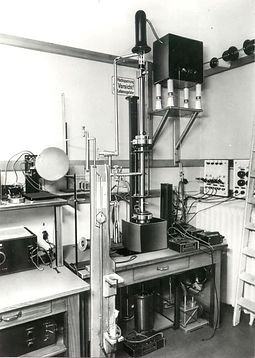
History of Scanning Electron Microscope
To understand the development of the first SEM, it is important to understand the process that evolved in developing the SEM.
It started in 1924 when a young French physicist introduced his theory of electron waves. Louis de Broglie stated that every moving particle or matter (electrons included) has an associated wavelength.
1926 came with the development of electron optics. German physicist, Hans Busch in his paper published in Archives Elektrotechnik suggested that magnetic fields could be used to direct beams of electrons analogous to the way light is refracted by optical lenses. He studied the trajectories of charged particles in axially symmetric electric and magnetic fields, and showed that such fields could act as particle lenses.
After these two discoveries in electron optics, the idea of Electron Microscope began to take shape and finally in 1931 Ernst Ruska and Max Knoll gave world the first ever electron microscope – a TEM (Transmission Electron Microscope) and 6 years later, Ruska developed the first version of a TEM which was available in the market. In 1986 Ernst Ruska also received the Nobel Prize in Physics for “Fundamental work in electron optics and for the design of the first electron microscope”.

Manfred Von Ardenne’s SEM
Manfred Von Ardenne, in 1937 invented a microscope with high resolution by scanning a very small raster with a demagnified and finely focused electron beam. Ardenne applied scanning of the electron beam in an attempt to surpass the resolution of the transmission electron microscope (TEM), as well as to mitigate substantial problems with chromatic aberration inherent to real imaging in the TEM.
Further work was done by Vladimir Zworykin in 1942 when he showed that secondary electrons provided topographic contrast by biasing the collector positively relative to the specimen. One of his main improvements was using an electron multiplier tube as a preamplifier of the secondary electrons emission current.
In 1948 Charles Oakley began developing the first commercial SEM based on Zworykin’s microscope. In 1960 Everhart and Thornley greatly improved the secondary electron detection. A new detector was created with a positively biased grid to collect electrons, a scintillator to convert them to light, and a light-pipe to transfer the light directly to a photomultiplier tube. To this date, all commercial SEMs use E-T based SE detector. In 1963, Pease and Nixon combined all of these improvements in one instrument: the SEM V with three magnetic lenses and an Everhart–Thornley detector (ETD). This was the prototype for the first commercial SEM, developed in 1965— the Cambridge Scientific Instruments Mark I ‘‘Stereoscan’’. Modern SEMs are based on this very prototype.

